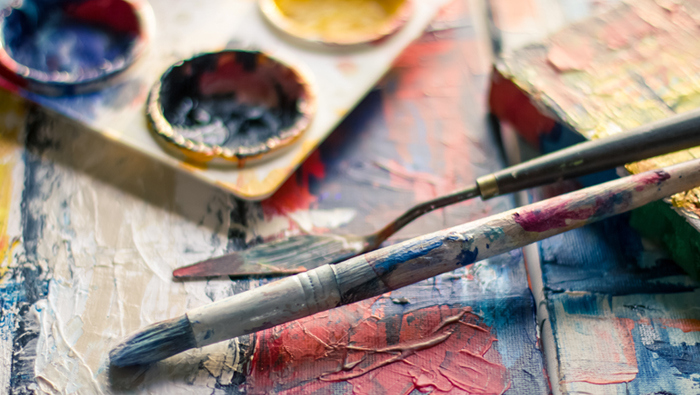
Find out more

Read the article

Find out more

Read the article

Find out more
The first person to be credited - in the 1940s - for applying the concept of ‘art therapy’ in the context of the therapeutic use of artistic creation was British artist Adrian Hill. He believed that the practice of art ‘in sickness and in health’ distracted people from the difficult experiences of wartime and allowed them to express themselves creatively.
At the same time, in the United States, psychologist Margaret Naumburg was laying the foundations for art therapy. In her approach, based on psychoanalysis, she encouraged the ‘spontaneous liberation of imagination’ by drawing symbols, combining different elements of art and interpreting them.

In art therapy it is believed that every individual, regardless of his or her artistic talents, is capable of creative activity. The essence of artistic activity is not the effect, but the creative process itself, involvement, the possibility of individual expression. Art is the result of action, it enables non-verbal communication of thoughts and emotions as well as dialogue with other people. Artistic expression can lead to overcoming emotional blocks and releasing the emotions experienced. The result is often the reduction of the tension or fears experienced, the elimination of psychosomatic symptoms - and thus an improvement of a psychophysiological condition.
To cite Malchiodi (2014):
‘It is widely accepted that artistic expression is a method of the visual expression of thoughts and feelings that are too painful to be put into words. Creative activity is also used in psychotherapy and psychological counselling, not only because it uses a different language but also because it naturally helps people of all ages to analyse their emotions and beliefs, reduce stress, solve problems and conflicts, and improve their well-being’.
Art therapy has evolved under the influence of various psychotherapeutic approaches as well as arts. In a narrow sense, the term ‘art therapy’ referred to therapeutic work with the use of visual arts, while in a broader sense it includes various artistic activities, such as:
Art therapy was initially used primarily in psychiatric hospitals and centres for patients with mental health disabilities, but now it is increasingly applied in a developmental context. The method is available to almost every group of patients, depending on their age or the type of difficulty they experience, as a main or supporting form of intervention.
When used with children, it offers them space to express themselves freely through artistic activities they like, bridging the difficulties resulting from insufficiently developed verbal skills (especially in expressing difficult feelings and emotions).
In the case of adult patients, it enables them to see their problems in a new light and to create tangible solutions, not only at the level of words, but also actions.
It continues to be applied in psychiatric hospitals supporting patients with a variety of difficulties ranging from depression through personality disorders to schizophrenia.
It is often used with people with disabilities - both intellectual and physical - stimulating all areas of development and allowing for fuller self-expression.
It is a valuable solution for people for whom other methods of therapeutic interventions have failed, e.g. people with the experience of a severe trauma or those who - for various reasons - are not able to fully express their experiences using the language.
Under favourable conditions of a good therapeutic relationship, the application of that provoke reactions at the level of the body and behaviour enables the patients to look into themselves and visualise experiences or emotions that escape words. This allows them to re-live, integrate and build a new, more adaptive narrative about themselves. It is a starting point for the path towards healing and improving one’s quality of life.
Bugajska – Bigos, I., Steliga A., (red) Współczesna arteterapia, aspekty teoretyczno – praktyczne. Wydawnictwo Naukowe PWSZ w Nowym Sączu. Nowy Sącz, 2015.
Chmielinicka – Plaskota, A. i in. (red) Arteterapia w praktyce klinicznej. Oddział Warszawski PTP, Warszawa, 2014.
Gilroy, A. Art Therapy, Research and Evidence-based Practice. SAGE Publications Ltd. 2006.
Malchiodi, C.A., (ed.) Handbook of Art Therapy. Guilford Publications. 2011
Magdalena Niedbał – psychologist and coach who has worked with a variety of clients. She was an educational advisor at the Jagiellonian University Disability Support Service, where she focused on ways to support students with high-functioning Autism spectrum.
I like
people liked this article